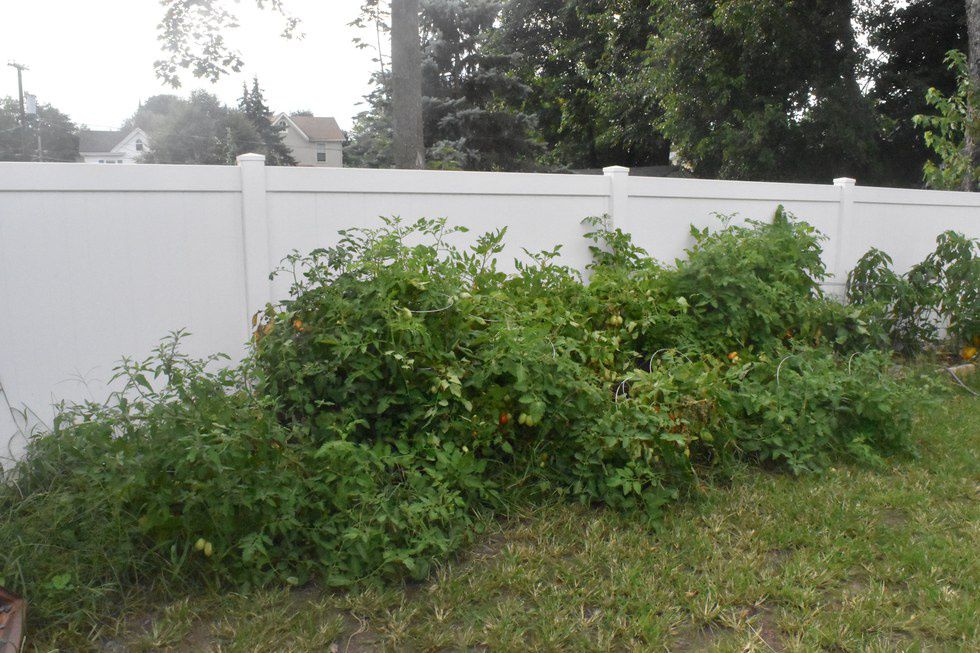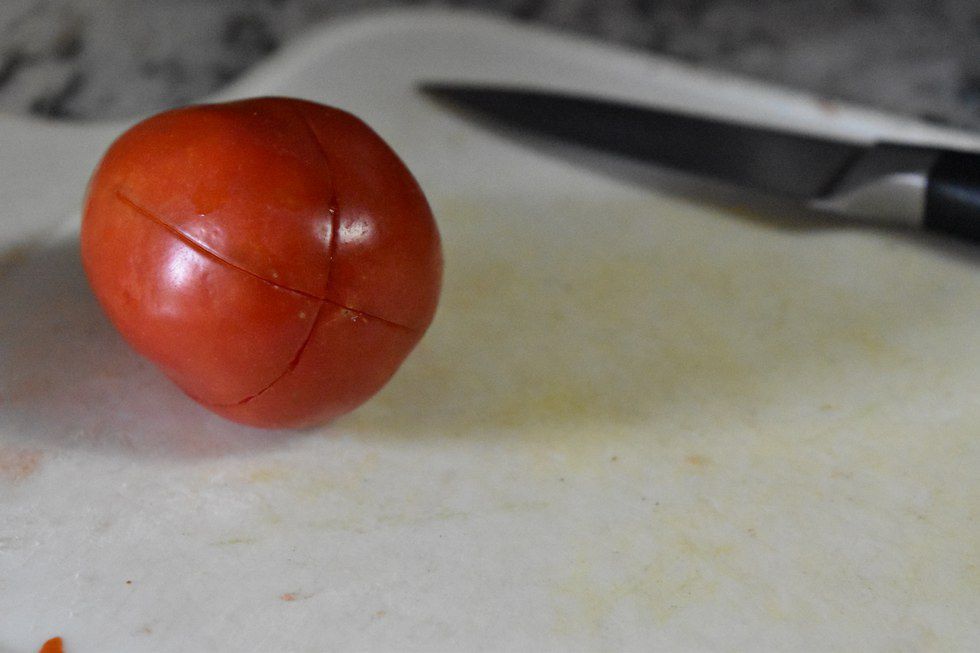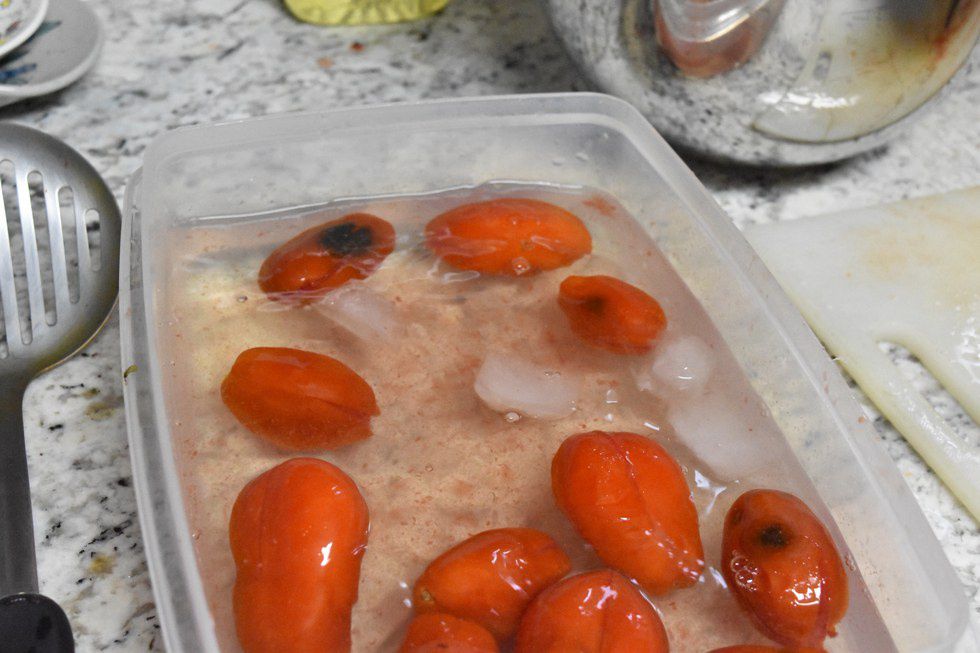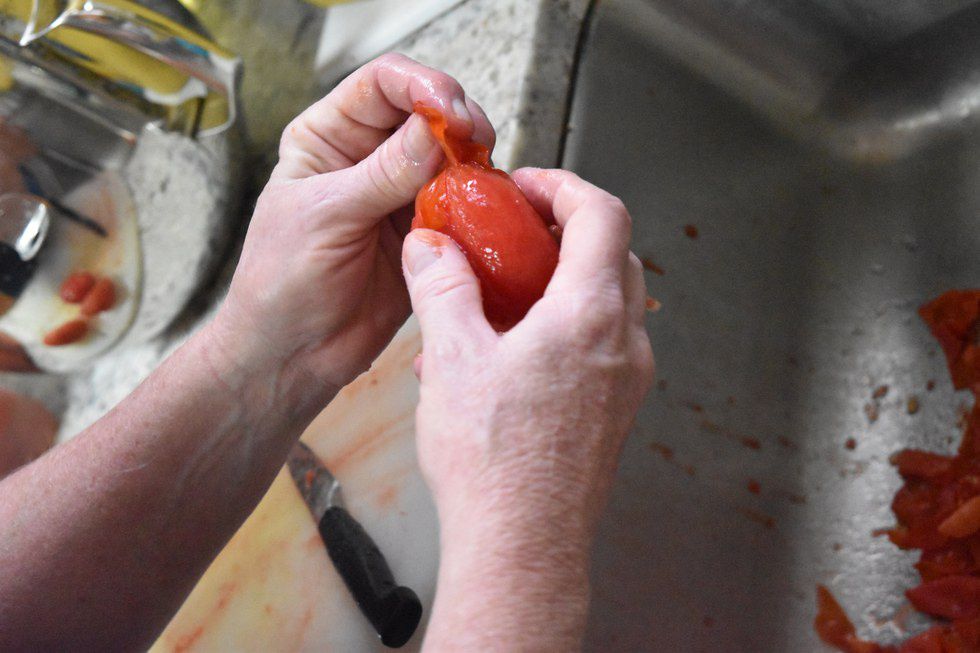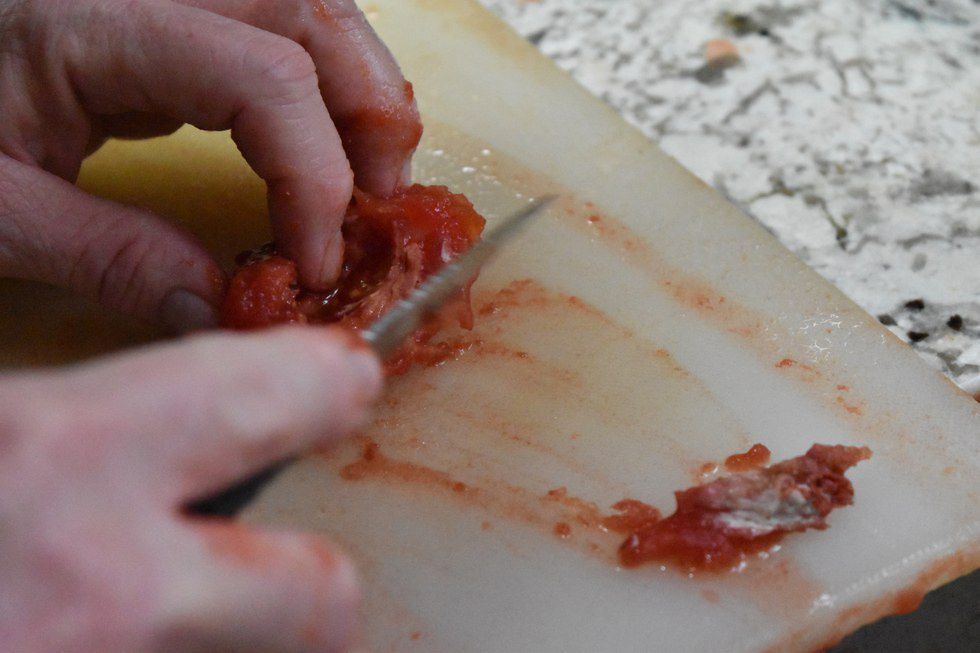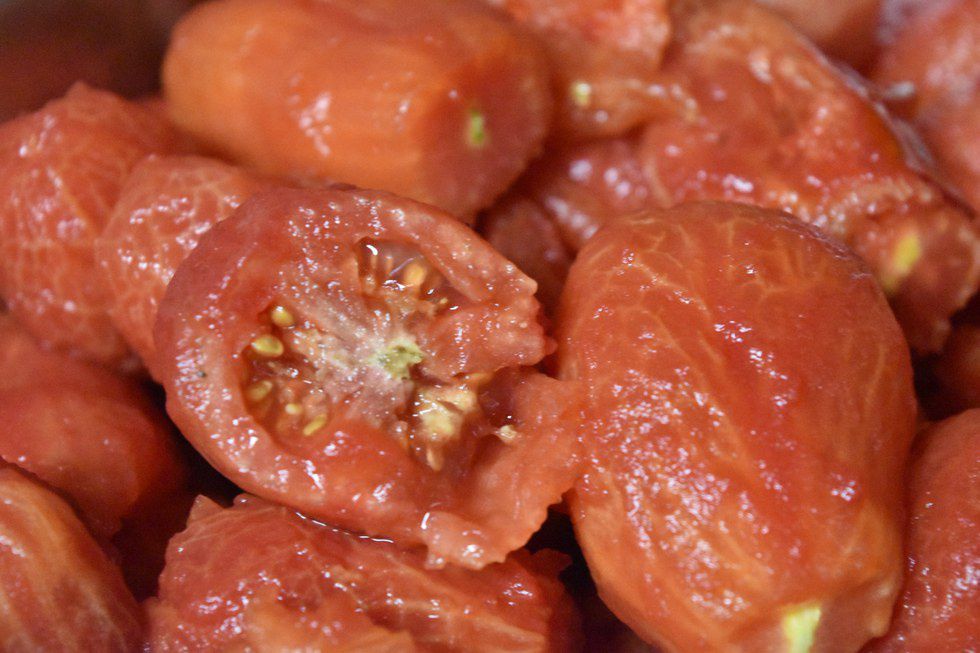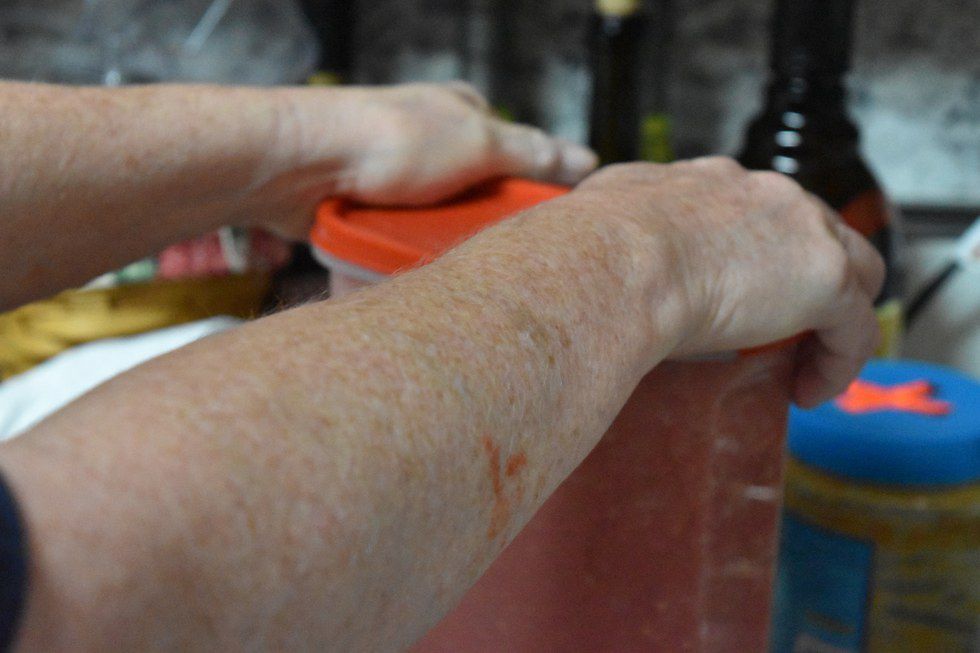I think that every American knows about the famous Jersey tomato. It's true, we have some of the best produce in the nation, particularly our sweet corn and tomatoes - and don't even get me started on Hammonton's blueberry fields. But for every piece of great local produce consumed, there is a dark side: the home-grown garden.
Sure, it seems like a great idea to use up some backyard space. Blueberries go great with anything, right? And who wouldn't love fresh tomatoes, vine-ripened and ready to be made into great sauces? Let me show you why you don't really want that backyard farm you think you do by taking you through the processing of the tomatoes from the Stiefel family garden.
For reference, our plants are all sauce tomatoes of a couple different varieties. These are no picturesque beefsteak tomatoes ready to be sliced and put on your burger. You've been warned.
1. Maintaining the Red Jungle.
Even when you give the plants slightly sandy soil and large cages, there is no taming a tomato plant. They need plenty of space and even then you should be prepared to stick your face into leaves and stems for produce. Also, watering will be a daily Herculean task, taking at least a minute per plant and so much water California would cry...
2. Harvesting the tomatoes.
The pictures of the actual harvest were too graphic to be shown, but above are just some of the results. One plant will give you more tomatoes than you expect, so only plant half a dozen unless you really, really love them. Just know that no matter how organized your picking schedule may be, you will come face-to-peel with a tomato rotting on the vine. I'm sorry.
3. Scoring the skin.
After washing the tomatoes, you'll need to start working on getting the skin removed from the flesh of the tomato that will end up in your sauce. Simply flay the skin by scoring an "x" shape into the bottom (opposite the stem) of the fruit. You don't need to cut it deeply, but if you accidentally go deeper it shouldn't be a problem.
4. Sterilizing the flayed tomatoes in boiling water.
You've done it - you're on your way to becoming a regular fruit Ramsay Bolton. Now, you'll have to put tomatoes into boiling water for 45 seconds to a minute to clean them. You don't know what's out there in nature getting cozy with your plants, after all.
5. Icing 'em.
Immediately after being taken out of the boiling water, put the tomatoes into an ice bath (or at least room-temperature water). Whether or not they have begun peeling yet, I promise you - they will flay easily. If you look closely, you'll see tomatoes in the picture above with mysterious black spots. They're not appetizing in your salad, but those tomatoes can still be used in your sauces and soups.
6. Peeling the skin.
As long as you remember to score the skins before boiling, peeling will be easy. Just grab the skin at the corners of the "x" and pull. Special thanks to my Mom for doing this part because the texture of hot, peeled tomato in your hands is something of an acquired taste.
7. Cutting away the bad parts.
You can now just slice away the bad parts like stems, bruises, and gently rotting sections. Some people might also remove the seeds depending on what they'll be doing with the sauce. If you've got a garbage disposal, it's convenient to put the edge of the cutting board over a sink where you can also throw the peels. Otherwise, you'll need to change the trash bag afterwards.
8. Cooking the peeled tomatoes.
Just boil them until they are cooked properly for whatever you are making. In the picture above, they're still raw and awaiting their fate.
9. Making a very unappetizing smoothie.
Once the cooked tomatoes have cooled down a little, you can use either an immersion blender (if you're a culinary wiz) or a regular kitchen blender (like me) to turn your skinned, cooked fruits into a paste. Just throw them in and put on the lid. They should be soft enough that the lower settings will puree them nicely.
10. Storing your tomato puree.
The processed tomato puree can be kept in your fridge for a week or two, but it can also be canned or frozen to store longer. Also, do not expect to leave the kitchen without a couple smears of red over your arms or even on your clothes. This stuff stains just like ketchup, so wear clothes you secretly hate or turn your shirt inside out and backwards.
Enjoy. Stay tuned for the much more delicious article on making a great tomato sauce from the flayed, boiled, and mashed remains of my garden.




